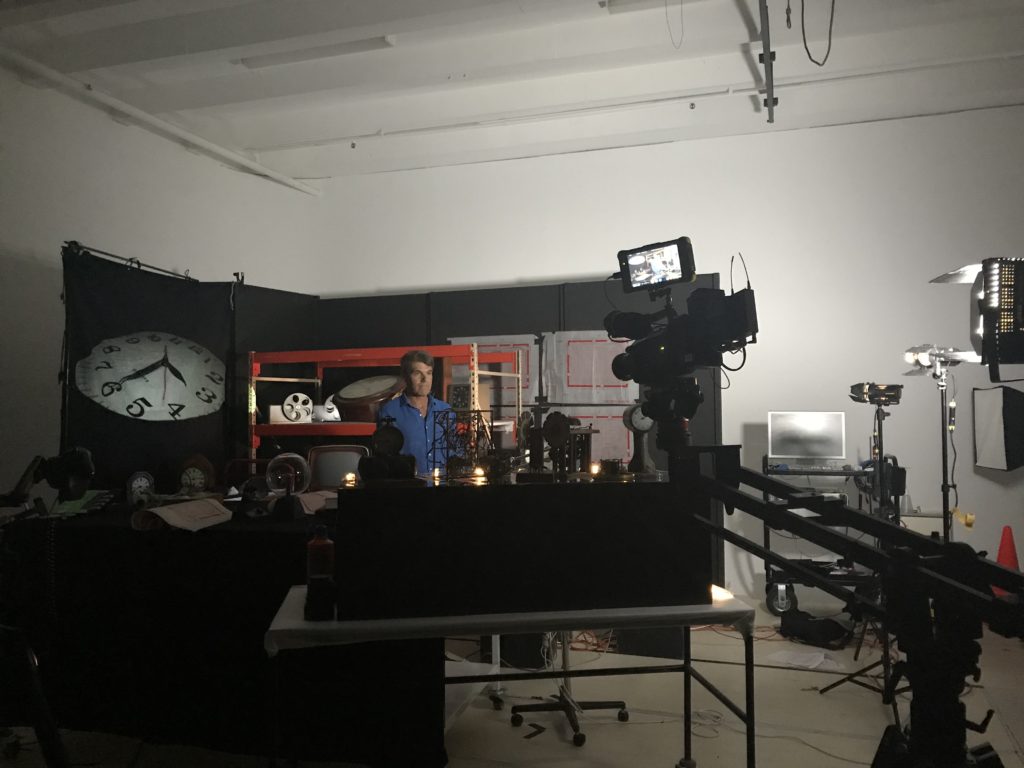
Back in January, the Catalyst team from the ABC approached us about using some of the Museum’s clocks in an upcoming episode of their show. They were producing an episode entitled ‘How To Build A Time Machine’, which would delve into the nature of time, whether time travel could ever become a reality, and what rules you’d want to follow if you did indeed find yourself in possession of a working time machine.
The Museum has a large variety of clocks and other timekeeping devices in its collection. In fact, Sydney Observatory in the Rocks, which is one of the Museum’s three sites, was built not to study astronomy (as most people would assume) but to use the stars to measure and convey accurate time to the people of Sydney. The clocks once used to drop the Time Ball that sits atop the Observatory’s sandstone tower are now preserved forever as part of the Museum’s collection.
In addition to these, we have a huge number of other timepieces, ranging from grand grandfather clocks (like this one built by James Oatley, Australia’s first clockmaker) to pocket-sized alarm clocks (such as this adorable One Day Bee clock). We hold chronometers used by seafaring explorers (Matthew Flinders’ chronometer, used in his circumnavigation of Australia in the 1800s), and clocks from other cultures which used entirely different models for measuring time (like this ancient Japanese clock, which always keeps six daytime and six night-time ‘hours’ throughout the year, so that the length of an ‘hour’ squeezes and stretches as the days shorten and lengthen with the seasons).
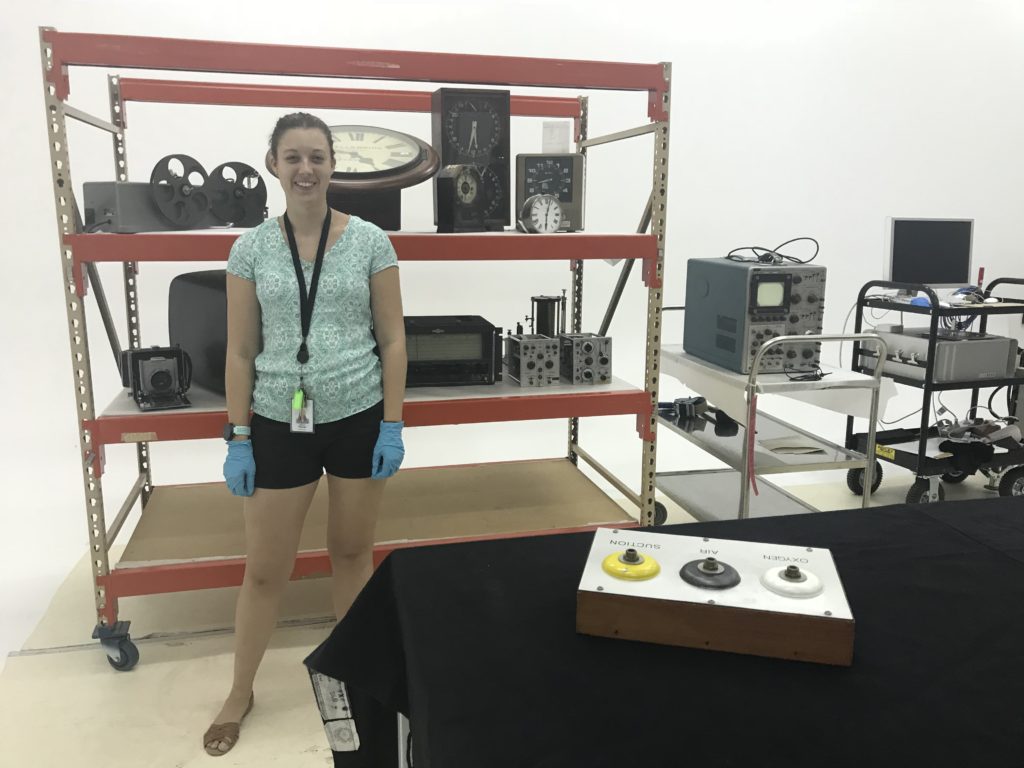
Catalyst came to us because we thought we might have some suitable clocks in our collection – and they were right! After confirming we’d be keen to help them, I met with Catalyst’s David Symonds and Max Murch, who explained that what they were trying to create was a ‘time-traveller’s workshop’ on set. As the curator assigned to this project, I was tasked with selecting objects from our collection that would create this vibe. I set about searching the collection and trawling the corridors of our collection store for ideas, and soon arrived at a selection of objects – a combination of timepieces and scientific equipment – that I thought hit the right note.
One of the things I quickly learned is that TV networks and museums work at very different paces. Catalyst first approached us in mid-January and were hoping to film the following week, a mere nanosecond in museum time. Thankfully for us, they were able to push this back a week, but even so it was a flurry of activity to get everything ready over the next couple of weeks.
I’ve written previously on the blog about what goes into caring for and keeping track of our vast collection. Put simply, moving an object isn’t merely a case of picking it up and putting it somewhere else – before the object is moved its condition must be checked to confirm it’s sturdy enough for relocation – and each time it’s moved around the museum (or taken offsite) its location code must be updated in our collection database. It’s a time-consuming procedure, but this painstaking work, completed by the Museum’s conservators and registrars, is how we ensure we all our objects remain intact, and that we know where they all are at any moment in time. This was the work that needed to be done before our final ‘object list’ could be approved, and to then make the objects available for the shoot.
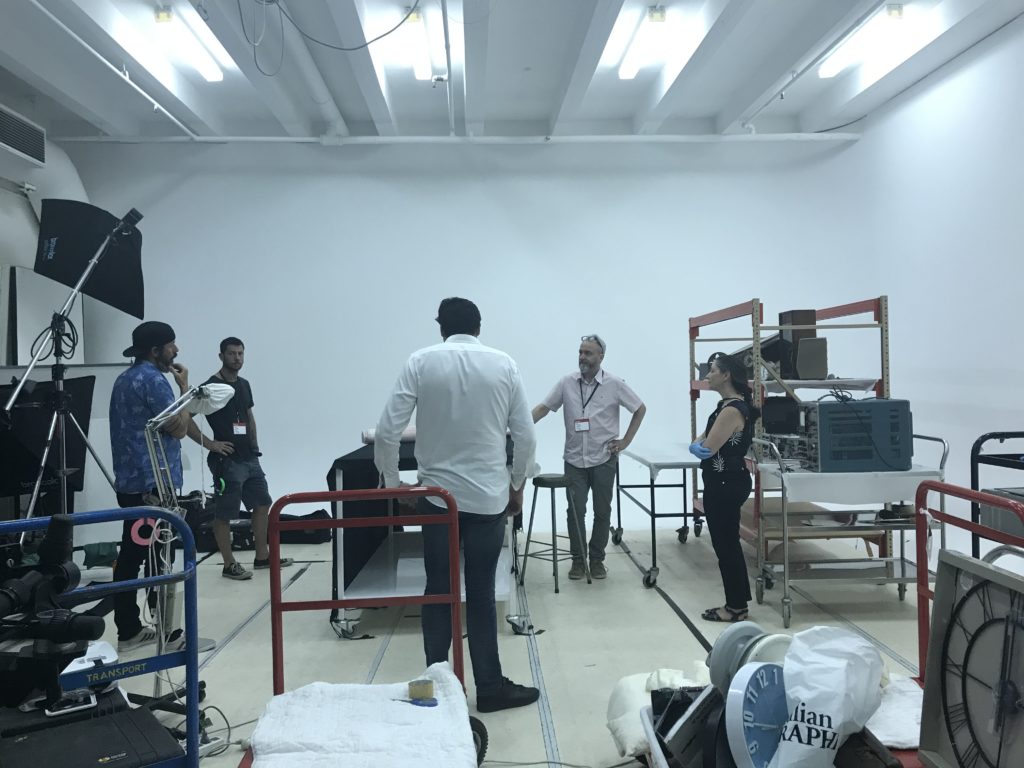
I had hoped to include some of our beautiful longcase clocks in the selection but was informed that moving these clocks involves first dismantling them, and then reconstructing them at the end, something that wouldn’t be possible given the time constraints. For this reason, we sadly had to drop them from the list. Because we knew there would be a lot going on during the filming, we also made the decision to exclude any ‘Category A’ objects (our most significant and irreplaceable objects) to minimise any risks to the collection. At last the object selection was finalised and approved by the relevant registration and conservation staff, and the objects were ready for the big move, and their moment in the spotlight!
For the safety of the objects, and the convenience of filming, it was decided that we would take over the MAAS photography studio for the day (normally used for photographing new acquisitions and objects featured in our exhibitions and publications). This meant that we only had to move the objects from one part of the Museum to another; we could bring them up to the studio on the morning of the shoot and have them safely returned by evening.
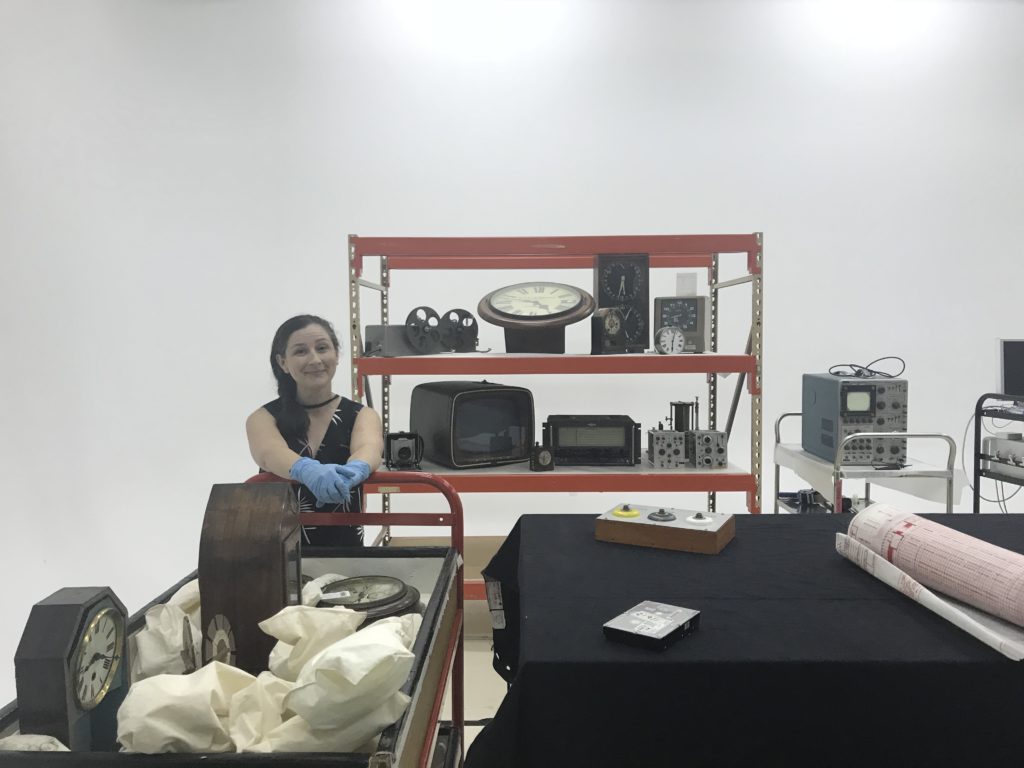
On the day of the shoot we arrived early to move the objects into the studio. Meanwhile the crew from Catalyst arrived to start setting up their equipment. Presenter Dr Graeme Phillips arrived mid-morning, suitcase in hand, having flown in from Melbourne for the day of filming. The MAAS and Catalyst staff worked together (and around each other) to get all the objects into position. We arranged them on two Museum trolleys that could be positioned in the foreground and background of the shot and moved around as necessary for different scenes.
Because of the number and size of some of the objects two Museum collection staff had to be present at all times, to watch over the objects and to move them when required. I worked with two of the Museum’s amazing registrars, Sarah Heenan and Terry Mooney, rotating in and out throughout the course of the day. For those who haven’t worked with museum objects before it’s easy to forget not to touch to objects, so part of our job for the day was to ensure everyone kept a safe distance. The Catalyst team were great though, working in what I’m sure were quite unusual circumstances for them and following our stringent object handling requirement (not to mention dealing with the noise emanating from the exhibition workshop nearby).
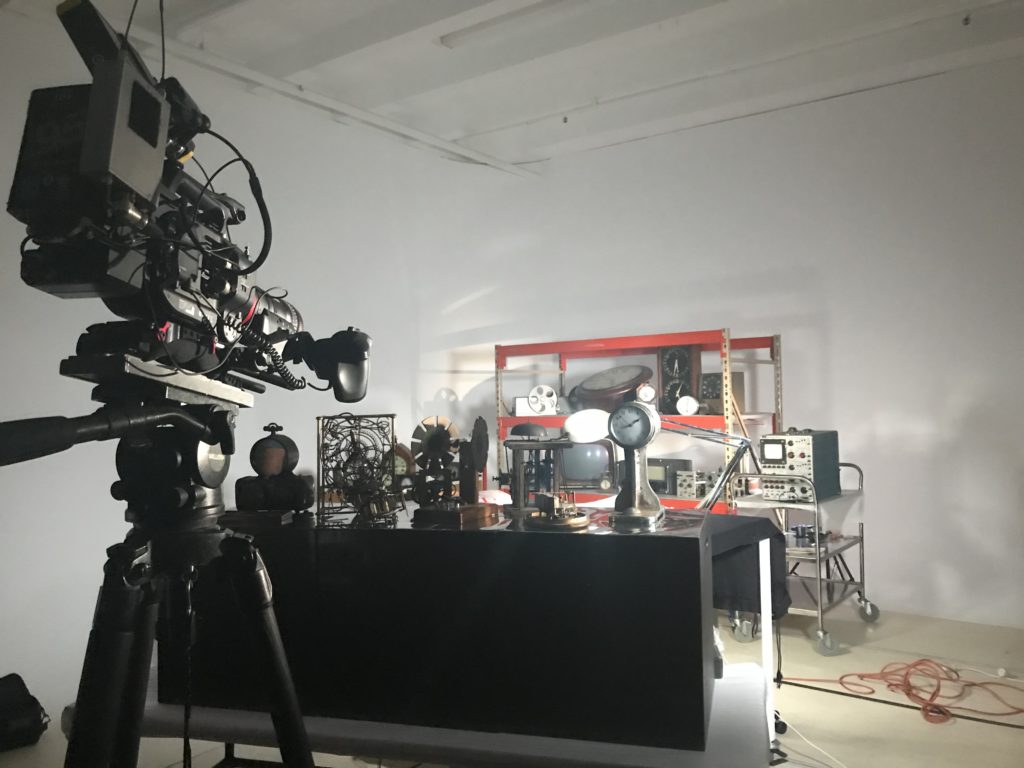
Having never had any involvement in TV production before, it was a fascinating experience to watch on as the filming took place. Most of us probably don’t give much thought to the time and effort that goes into creating on hour of television. But watching the Catalyst team in action, I soon realised that for every minute of TV you see, there can be hours of work behind the scenes to get everything set up right and doing multiple takes to capture that perfect shot. Although we spent the entire day filming, the footage taken at MAAS probably only contributed a couple of minutes to the final product! I love to write about what goes on behind the scenes at a museum, but this experience has given me a whole new appreciation of what happens behind the scenes filming a TV show.
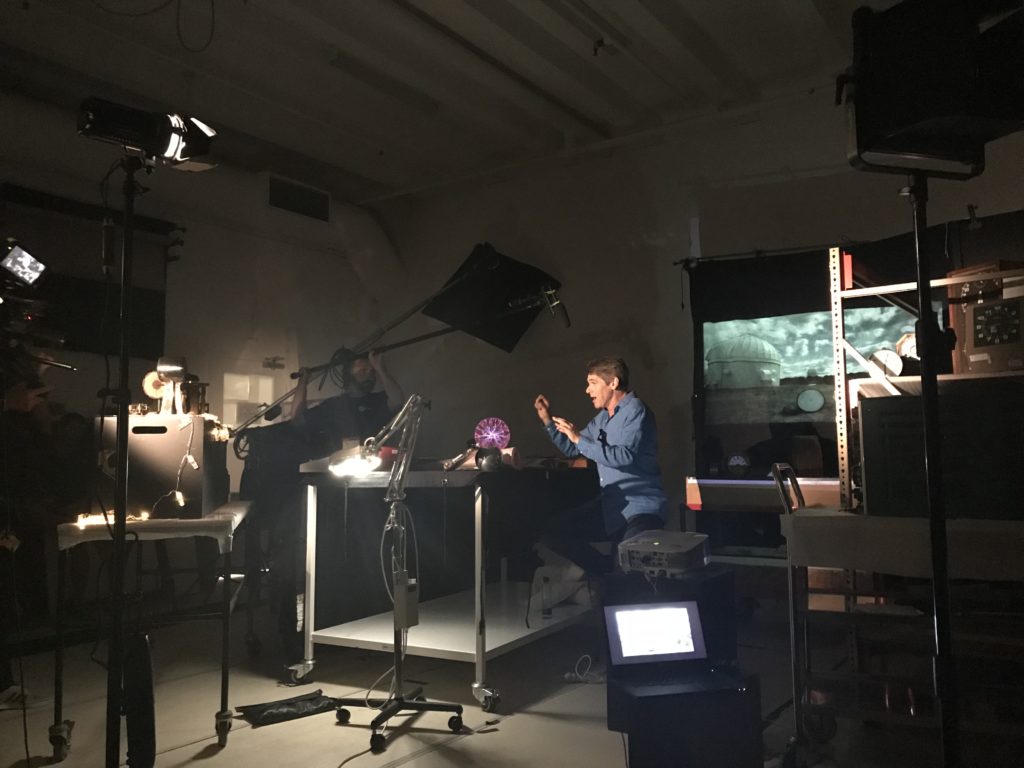
Presenter Dr Graeme Phillips explains the finer points of time travel. Photo: Sarah Reeves, MAAS
Catalyst’s How To Build A Time Machine episode aired on ABC on Tuesday 28 August. If you didn’t catch it live, you can re-watch the episode on ABC iView. And don’t forget to look out for our objects! You can catch them at minutes 0:00, 2:15, 8:30, 12:00, 40:15 and 53:30 of the episode.
Written by Sarah Reeves, Assistant Curator